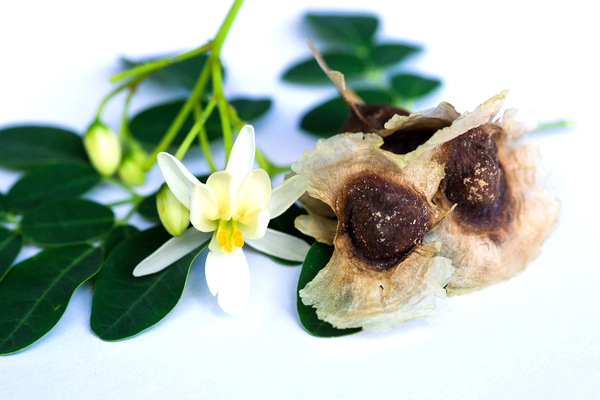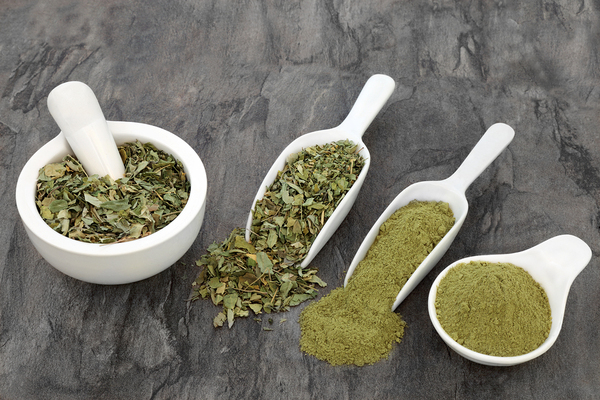


Moringa oleifera is the scientific name for the Moringa tree, which is also known as the “drumstick tree” due to its long, slender seed pods. It is also sometimes called the “miracle tree” because of the range of nutritional benefits it offers.

The leaves, flowers, stems, and seeds of the Moringa tree are edible. Leaves, and sometimes stems, are used to make tea. It is grown mostly in India and Pakistan, is drought-resistant, and the leaves and seeds have long history of use for combating malnutrition, particularly among infants and nursing mothers.
Moringa has also been used for centuries as a traditional herbal medicine. One of the most common ways to consume Moringa is by using the leaves to create Moringa tea. One reason Moringa tea has grown in popularity in the west is its ability to provide a natural boost of energy, but without caffeine.
The combination of nutrients, including a coenzyme called NADH, helps with energy production on a cellular level. In other words, Moringa tea can give you improved energy in the morning without the risk of caffeine-induced jitteriness or anxiety.
The leaves, flowers, stems, seeds, bark, and fruit of the Moringa tree are all edible and nutritious, but it is the leaves that pack the biggest nutritional punch. The leaves offer an abundance of minerals; potassium, calcium, phosphorous, iron, and vitamins, including A, B6, B2, C, and D.
They’re also packed with essential amino acids, antioxidants, polyphenols, and flavonoids. If you have a Moringa plant, you can cut the stems and leaves off, wash them thoroughly with water, and air dry them for 10 to 14 days, until they become crisp. Then you can simply pick off the dried leaves and grind them in a blender.
The dried stems, too, can be used to make Moringa tea, or you can use both stems and leaves. Moringa can be purchased in several forms, including leaf powder and ready-made teabags.

Moringa leaves can be purchased as powder, or you can dry the leaves and grind them yourself.
The antioxidants in Moringa, including vitamin C, beta carotene, quercetin, and chlorogenic acid, help the body fight the effects of damaging free radicals. Moringa tea also has antibacterial and antimicrobial properties, which can help balance gut flora and ease digestive problems. Studies have shown that the addition of Moringa leaves to meals lowered blood glucose levels without affecting insulin secretion.
The flavonoids in Moringa tea have been found helpful in alleviating inflammation, and it supports good cardiac health. Animal studies have shown a therapeutic effect against high cholesterol levels. In short, Moringa tea instead of coffee offers better nutrition, fights free radicals, and increases energy levels without the use of caffeine. And it’s extremely easy to make.
How to Make Moringa Tea
You can make a cup of Moringa tea with one teaspoon of dried Moringa leaves (which you dry and grind yourself, or purchase in ready-to-use form), or with 3 to 4 stalks of fresh moringa. Add a cup of hot water, let it brew for a few minutes, then honey and/or lemon to taste. That’s it!
The flavor of Moringa tea has been described as similar to a mild, peppery green tea. It has also been described as tasting like matcha with notes of spirulina. It’s convenient, nutrient-dense, and offers a natural increase in energy without the potential side effects of caffeine.
Of course, you don’t have to replace your morning cup of coffee with Moringa tea, because Moringa is good at any time, and you won’t need to worry about caffeine-induced insomnia if you have it at night. The world is home to some incredible plants that offer nutritional and healing power that many of us in the west haven’t yet learned about.
Moringa tea is the product of one such plant and has a track record hundreds of years long in promoting better nutrition while fighting inflammation and free radicals and giving people energy. Maybe you should give it a try! And if you’re interested in learning more about healthful living, we invite you to contact us at any time.